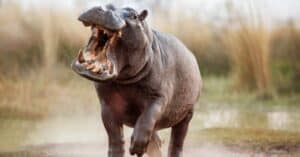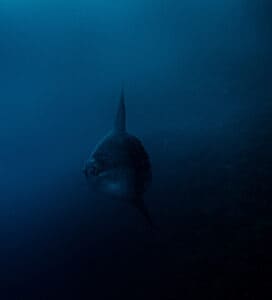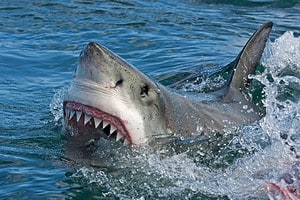England was once home to several majestic predators, like bears and wolves. But today, the country does not have many large mammals. However, this region is still abundant in flora and fauna. Discover the 15 most beautiful wild animals in England, including where you can find them.
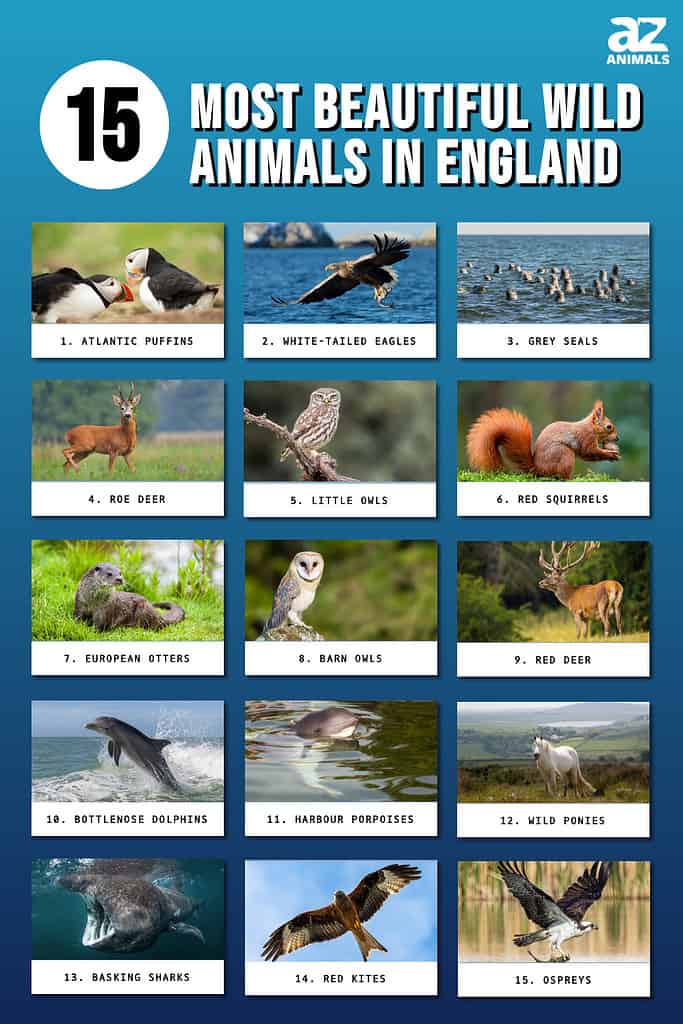
1. Atlantic Puffins
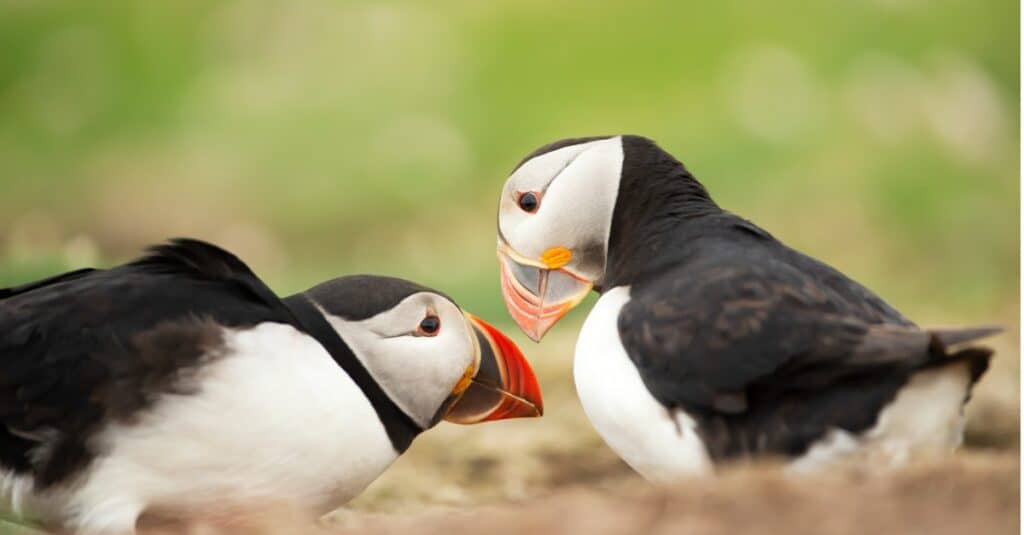
Atlantic puffin mates strengthen their bond by billing or rattling their beaks together.
©Giedriius/Shutterstock.com
These seabirds belong to the Auk family and are the only puffins native to the Atlantic Ocean. They prefer colder waters in the northern regions of the Atlantic, where they breed in Eastern North America and Northwest Europe. And while they breed on land in large colonies, they spend most of their time in the open water. You can find these birds in England during the spring, specifically on the Farne Islands and the Bempton Cliffs along the Yorkshire Coast.
2. White-Tailed Eagles
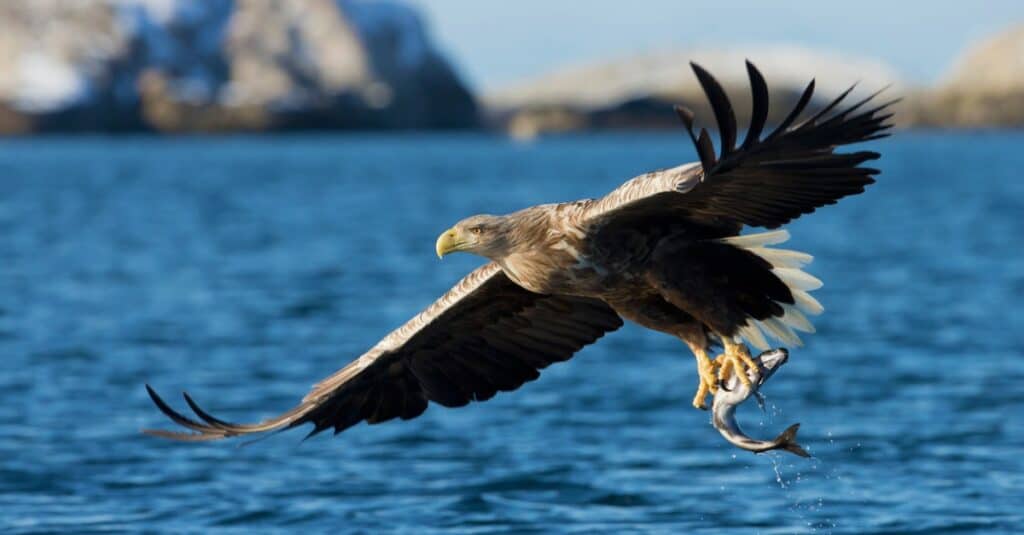
Sea eagles are some of the largest birds in the world.
©iStock.com/Dgwildlife
Also known as the sea eagle, these large birds of prey have a broad distribution across Eurasia. This bird belongs to the Accipitridae family, which encompasses other eagles, hawks, harriers, and kites. The white-tailed eagle is the largest bird of prey in the UK, featuring a wingspan over eight feet long. Several years ago, these raptors were extinct in England, but reintroduction efforts have established a small population on the Isle of Wight.
3. Grey Seals
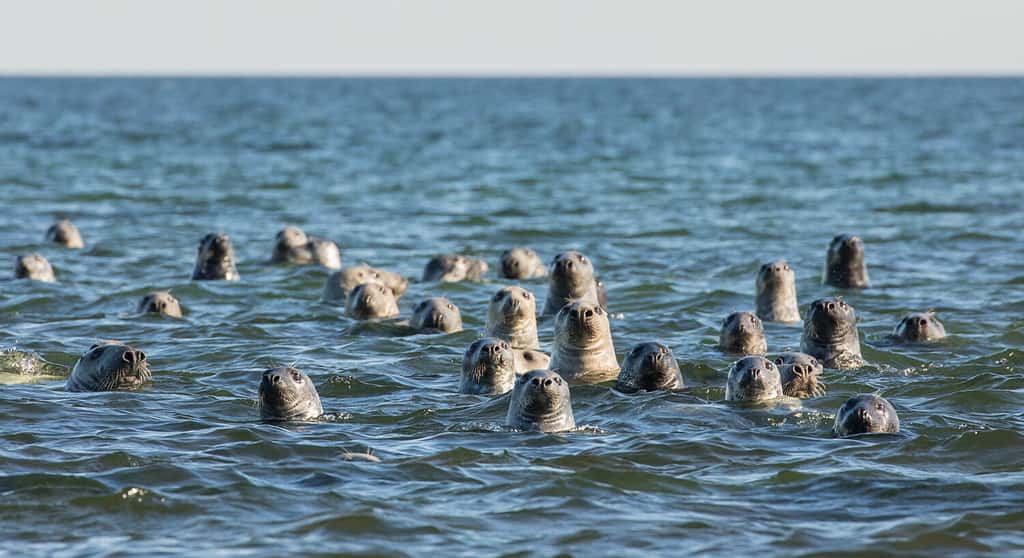
Grey seals have excellent hearing and vision when underwater.
©F-Focus by Mati Kose/Shutterstock.com
The grey seal is a large earless species and the only one in its genus. They live along both coasts of the North Atlantic Ocean and are often confused with the common seal. However, grey seals are larger, have longer heads, and have sloping noses. There are several breeding populations in the UK, including Norfolk, Lincolnshire, Farne Islands, North Rona, and Orkney. And they like exposed rocky coasts and long stretches of shoreline, like those at Blakeney Point, which houses one of the largest seal colonies.
4. Roe Deer
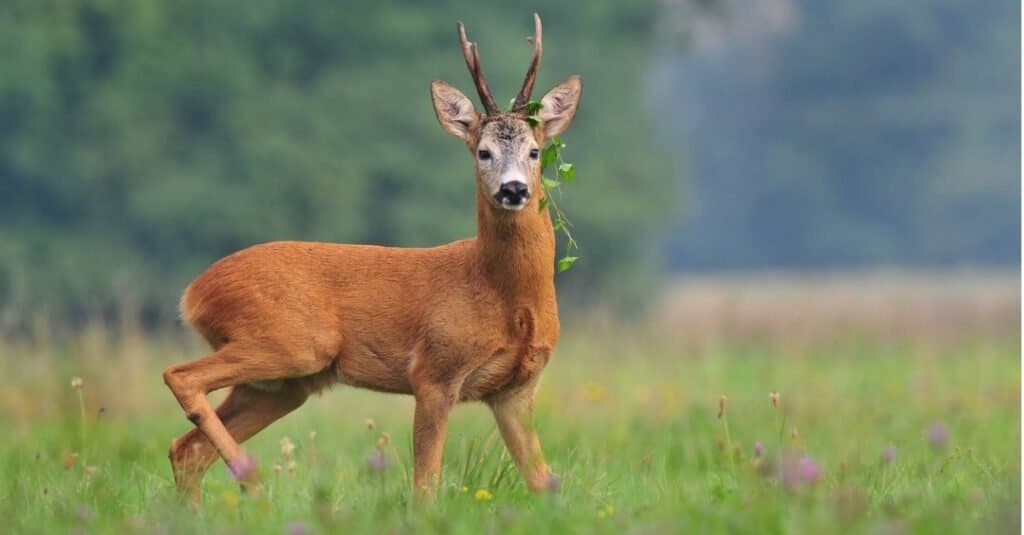
Roe deer are native to cold regions.
©Soru Epotok/Shutterstock.com
The roe is a small reddish-brown deer native to cold regions. This species features short antlers, slender legs, and extremely short tails, making it appear to have no tail. You can find them throughout Europe, where they primarily live in woodland environments. But they also venture into fields and farmlands to find food. Roe deer live across mainland Britain, but they are most abundant in Southern England. You will typically find them alone during the summer and in small groups in the winter.
5. Little Owls
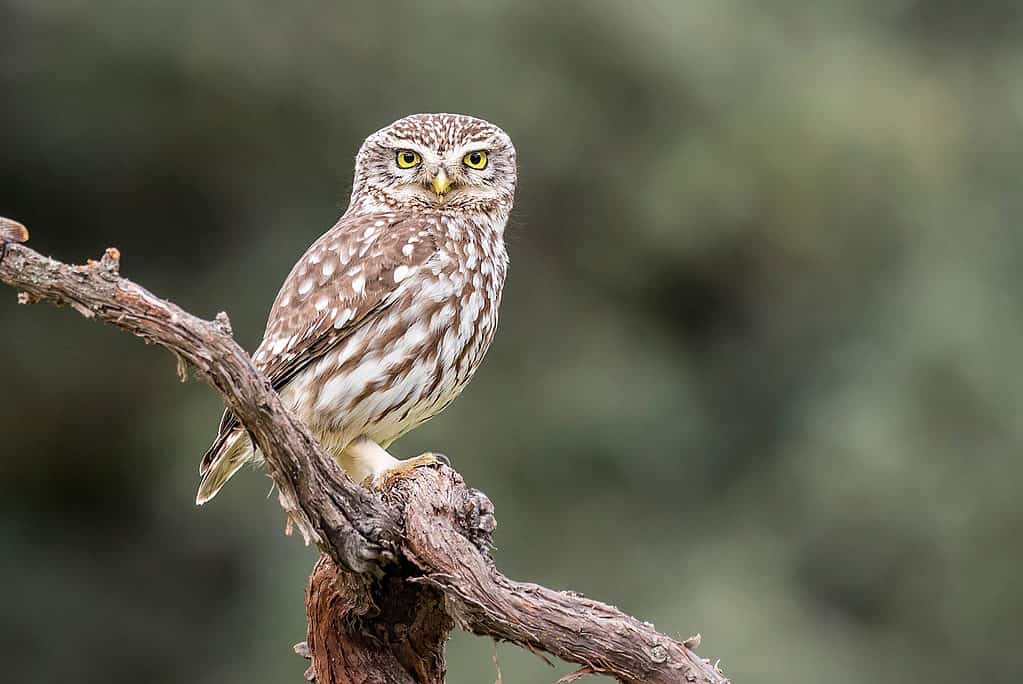
The little owl is one of the most beautiful wild animals in England.
©fernando sanchez/Shutterstock.com
As its name suggests, the little owl is a small owl from the Strigidae family. This species is mainly nocturnal and features cryptic coloration to hide from predators. It inhabits the temperate regions of Europe, where you can spot it near farmlands, woodlands, and semi-deserts. The little owl is common in central and southern England in lowland farmland, parks, and orchards. While small, this owl can be territorial and very vocal.
6. Red Squirrels
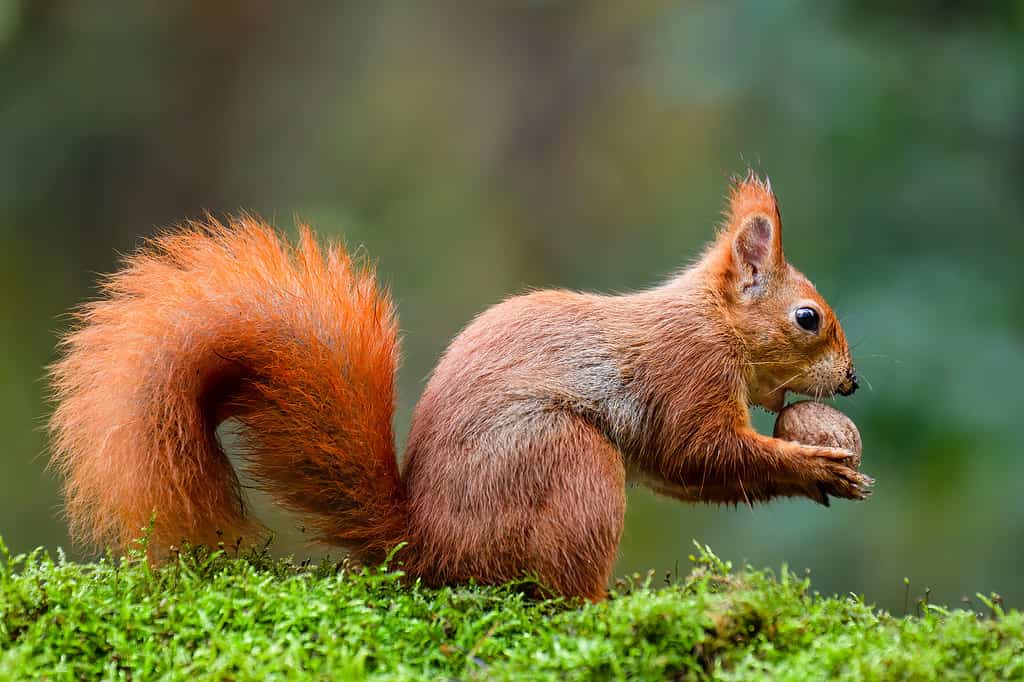
Red squirrels are native to Europe and Asia.
©Koen Adriaenssen/Shutterstock.com
Also known as the Eurasian red squirrel, it is a tree squirrel species native to Europe and Asia. As a tree squirrel, the red squirrel spends much of its time in boreal, broad-leaved, and coniferous woods. These squirrels are easily distinguishable by their reddish-brown fur, bushy tails, and erect ears. It has a decreasing population in many regions due to the introduction of grey squirrels, but they still have abundant numbers in Scotland and Ireland. You can also find them on the Isle of Wight and Brownsea Island.
7. European Otters
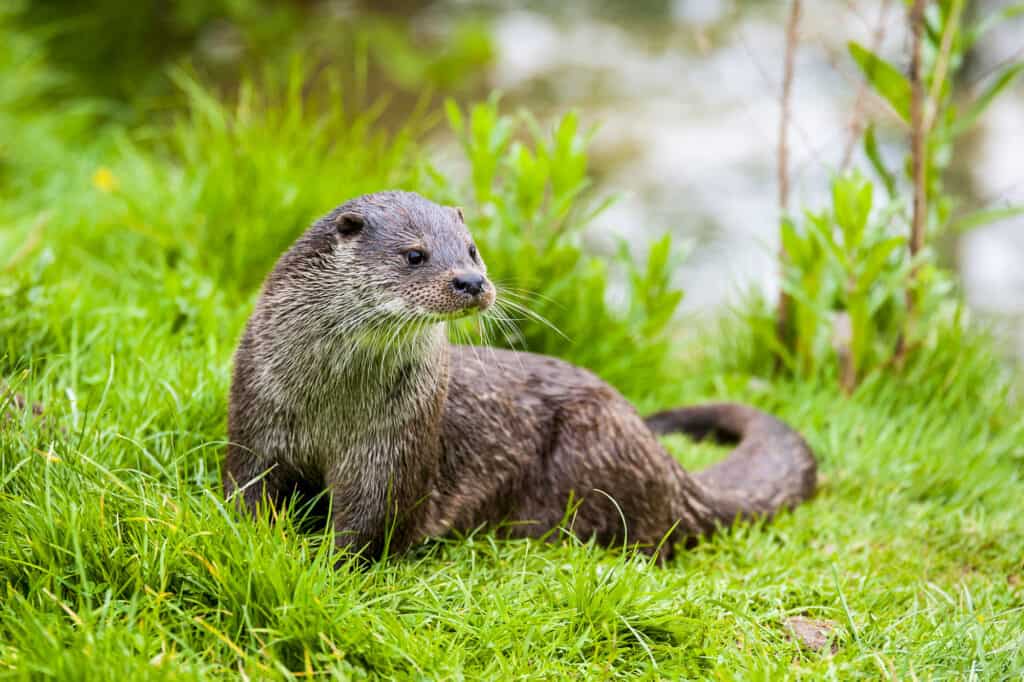
European otters live in Southwest England.
©iStock.com/edevansuk
The European otter is a semiaquatic mammalian species in the Mustelidae family, which includes the weasels. This playful and unique creature is native to Eurasia, including Europe, Asia, and North Africa. This species has declined across its range due to pollution, hunting, and habitat loss. However, its population is recovering in several regions. England features lower densities of this species than other areas of the UK. But you can still find them in Southwest England and the west coast of Wales.
8. Barn Owls
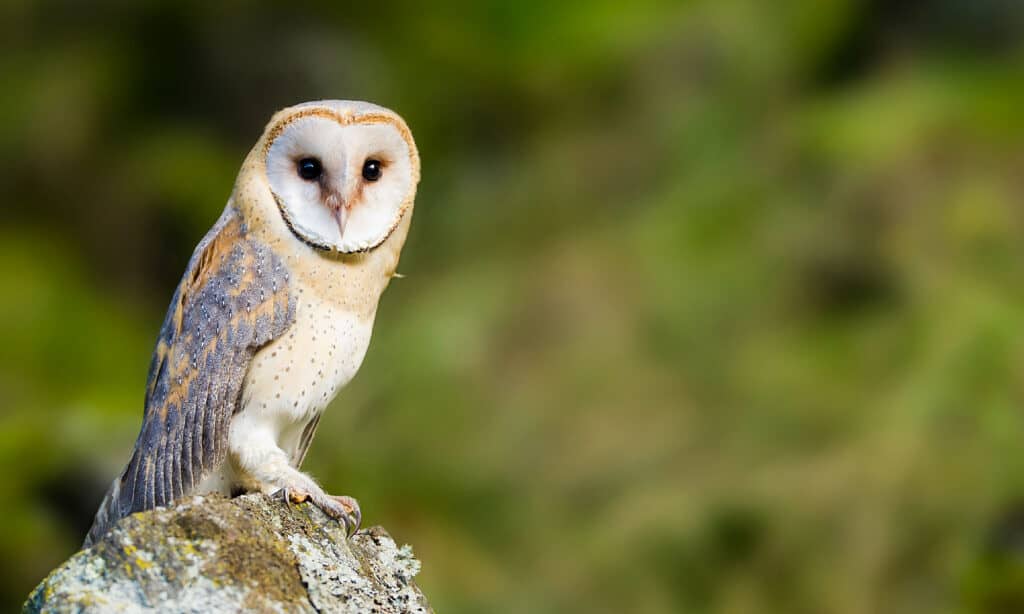
Barn owls are the most widespread owl species.
©iStock.com/mzphoto11
Found everywhere except the polar and desert regions, barn owls are the most widespread owl species on Earth. They are also one of the most widely distributed birds, period. Despite its familiarity and abundance, this species is still a sight to see, featuring a ghostly heart-shaped face with pale plumage and dark eyes. These birds live across the UK, inhabiting open country, riverbanks, field edges, and roadsides.
9. Red Deer
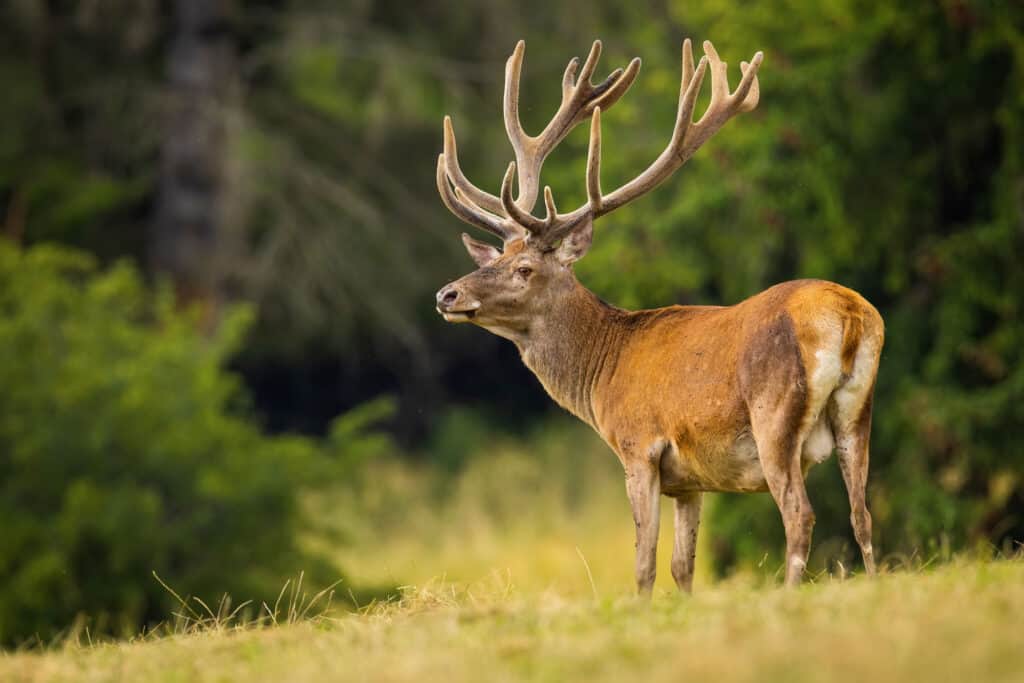
Red deer have large branching antlers.
©iStock.com/JMrocek
As one of the largest species, red deer are majestic and beautiful wild animals in England. They feature reddish-brown fur, and stags have enormous branching antlers. Red deer are much larger than roe deer. This species is found throughout most of Europe and parts of Asia. They live in many habitats, including mature forests, swamps, woodlands, mountains, and meadows. Most populations of red deer near England are in the open moorlands of the Highlands, but you can also find them in Northwest England, East Anglia, and Exmoor.
10. Bottlenose Dolphins
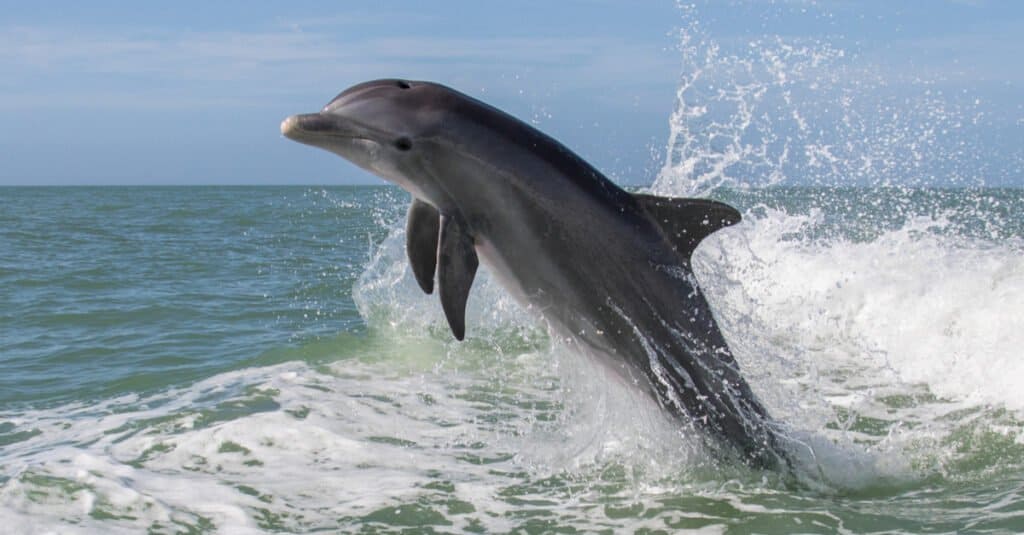
On average, bottlenose dolphins live for fifty years.
©Tory Kallman/Shutterstock.com
These aquatic mammals may look cute, but they can grow to a whopping 1,300 pounds and grow up to 13 feet long. They live in temperate and tropical waters around the world, including the UK seas. In fact, the most northerly population of bottlenose dolphins resides in the Scottish waters of Moray Firth. While their populations are not abundant near England, it is not impossible to spot one.
11. Harbor Porpoises
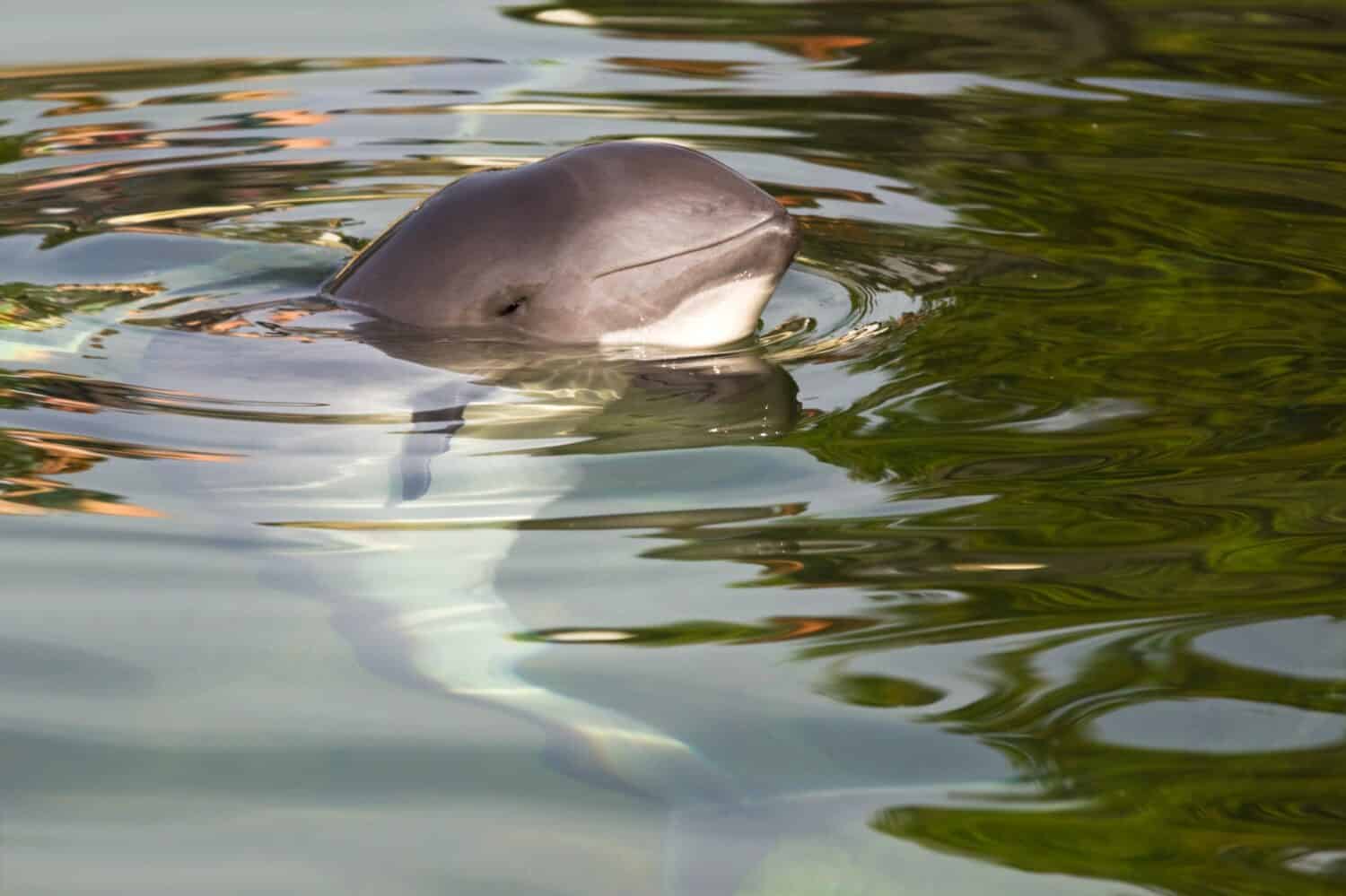
Harbor
porpoises
live in shallow water near the coast.
©onutancu/Shutterstock.com
While similar to a dolphin, the harbor porpoise differs slightly in appearance and is much shyer. These mammals are also one of the smallest species of cetacean. As its name suggests, the harbor porpoise lives near the shoreline and river estuaries. You can commonly find them in shallow waters near the coast around the British Isles. Bottlenose dolphins occasionally attack harbor porpoises due to their smaller size.
12. Wild Ponies
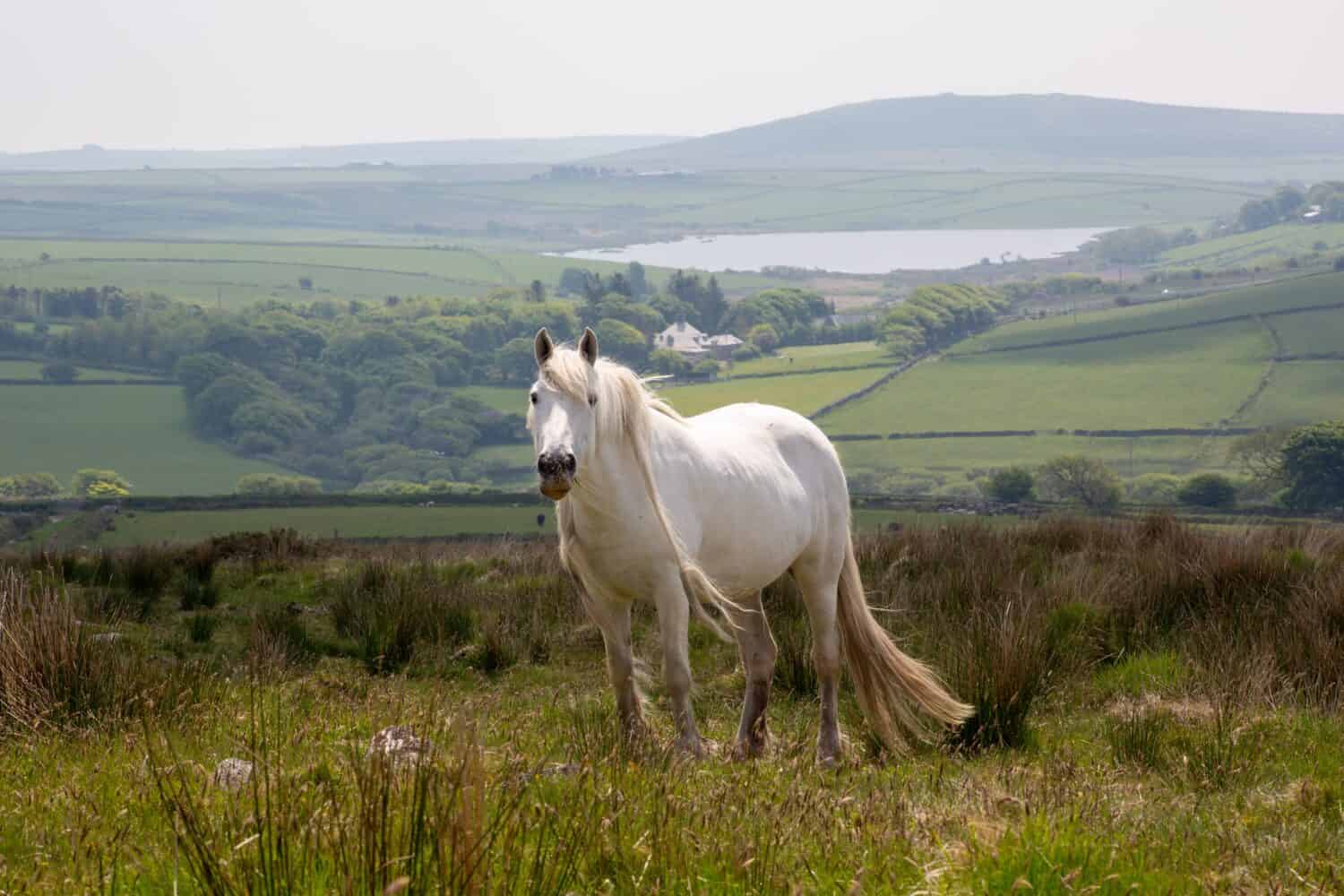
Ponies are wild animals in England.
©Paul Nash/Shutterstock.com
Hardy and strong, wild ponies roam free in several areas of the UK. The New Forest pony is a native pony to the mountains and moorlands of the British Isles. It inhabits the New Forest in Southern England, where these horses have remained since the last Ice Age. While their populations fell to just 600 in 1945, they have rebounded and steadily increased their numbers. This horse is known for its strength, intelligence, and gentle behavior.
13. Basking Sharks
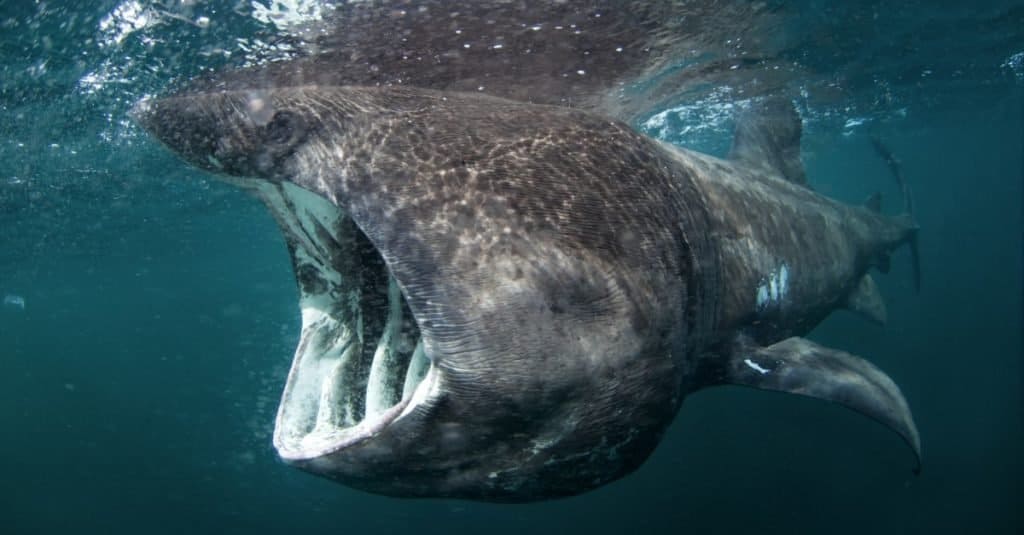
Basking sharks are the second-largest shark species on Earth.
©Martin Prochazkacz/Shutterstock.com
While you may consider this creature to be more terrifying than beautiful, there is no doubt that the basking shark will leave a lasting impression on anyone who encounters it. It is the second-largest living shark species in the world, weighing 11,000 pounds and reaching up to 26 feet long. Despite their enormous size, these sharks are plankton eaters and harmless to humans. But you still may want to stay away from its gaping mouth. They are common near the UK, including British waters, where you are more likely to stop them between mid-May and July.
14. Red Kites
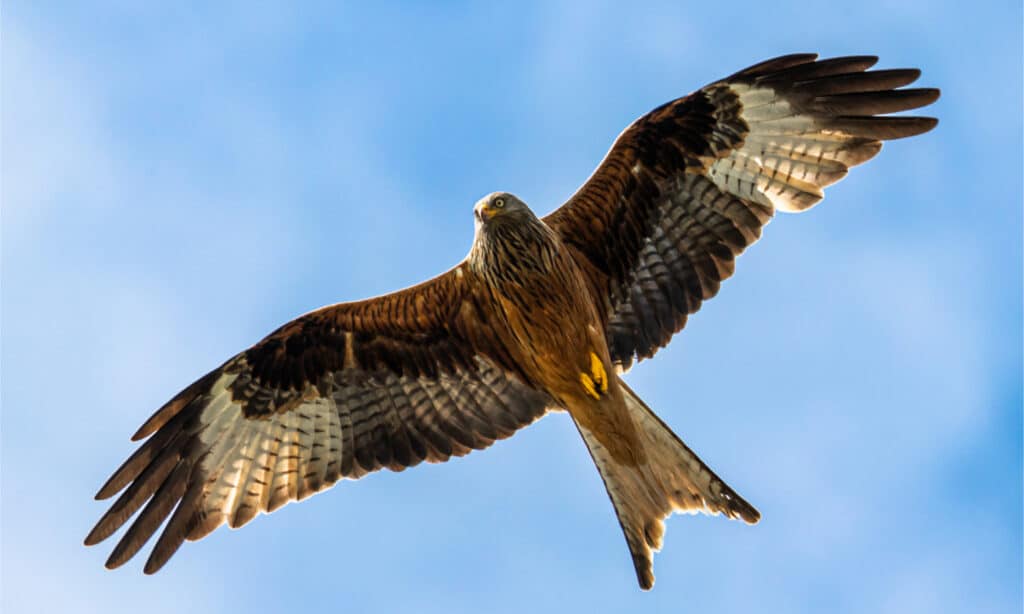
Red kites have a wingspan of 69 to 77 inches.
©Werner Baumgarten/Shutterstock.com
This medium to large bird of prey belongs to the raptor family, which includes eagles and buzzards. This species is not hard to miss, with its reddish-brown color, angled wings, and forked tails. You can find these birds soaring in open, sunny skies in Southern England year-round.
15. Ospreys
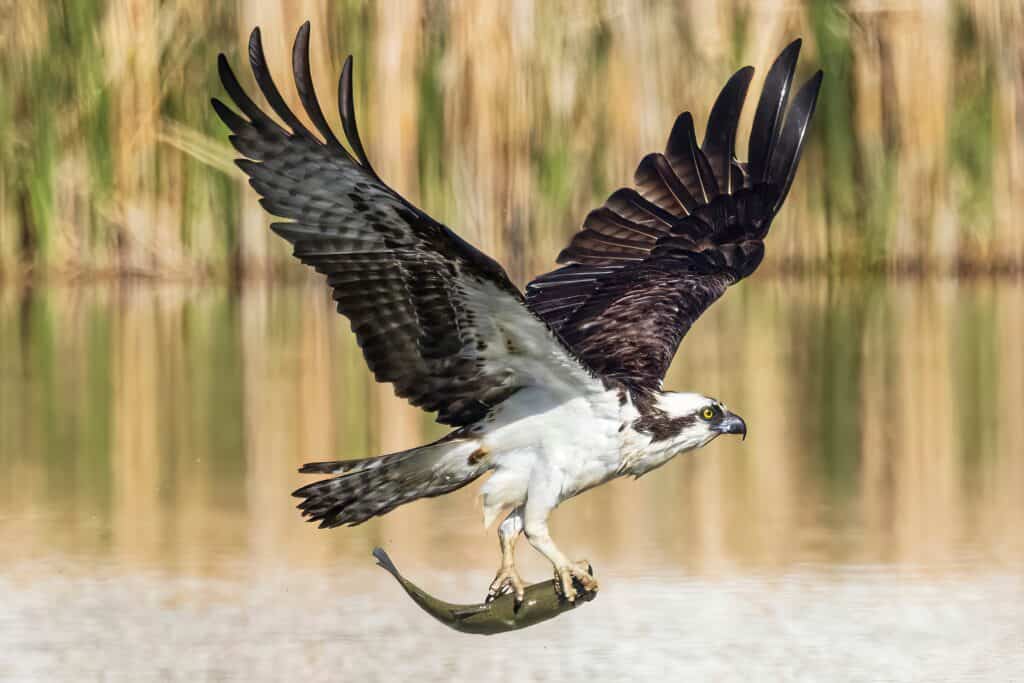
Ospreys have excellent vision and can detect underwater objects from the air.
©BlueBarronPhoto/Shutterstock.com
Also called sea hawks, ospreys are another large raptor and diurnal bird of prey. They are widely distributed across the globe and live in many habitats but nest in locations near bodies of water. While most of their population resides in Scotland, you can also see them in North East England.
The 15 Most Beautiful Wild Animals in England
| Rank | Wild Animals in England | Where to Find Them |
|---|---|---|
| 1 | Atlantic Puffin | Farne Islands and the Bempton Cliffs along the Yorkshire Coast |
| 2 | White-tailed Eagle | Isle of Wight |
| 3 | Grey Seal | Norfolk, Lincolnshire, Farne Islands, North Rona, and Orkney |
| 4 | Roe Deer | Most abundant in Southern England |
| 5 | Little Owl | Central and southern England |
| 6 | Red Squirrel | Scotland and England; Isle of Wight and Brownsea Island |
| 7 | European Otter | Southwest England and the west coast of Wales |
| 8 | Barn Owl | across the UK |
| 9 | Red Deer | Northwest England, East Anglia, and Exmoor |
| 10 | Bottlenose Dolphin | Scottish waters of Moray Firth |
| 11 | Harbor Porpoise | Coast around the British Isles |
| 12 | Wild Pony | New Forest of Southern England |
| 13 | Basking Shark | Waters around the UK |
| 14 | Red Kite | Southern England |
| 15 | Osprey | Scotland, North East England |
The photo featured at the top of this post is © Paul Nash/Shutterstock.com
Thank you for reading! Have some feedback for us? Contact the AZ Animals editorial team.




